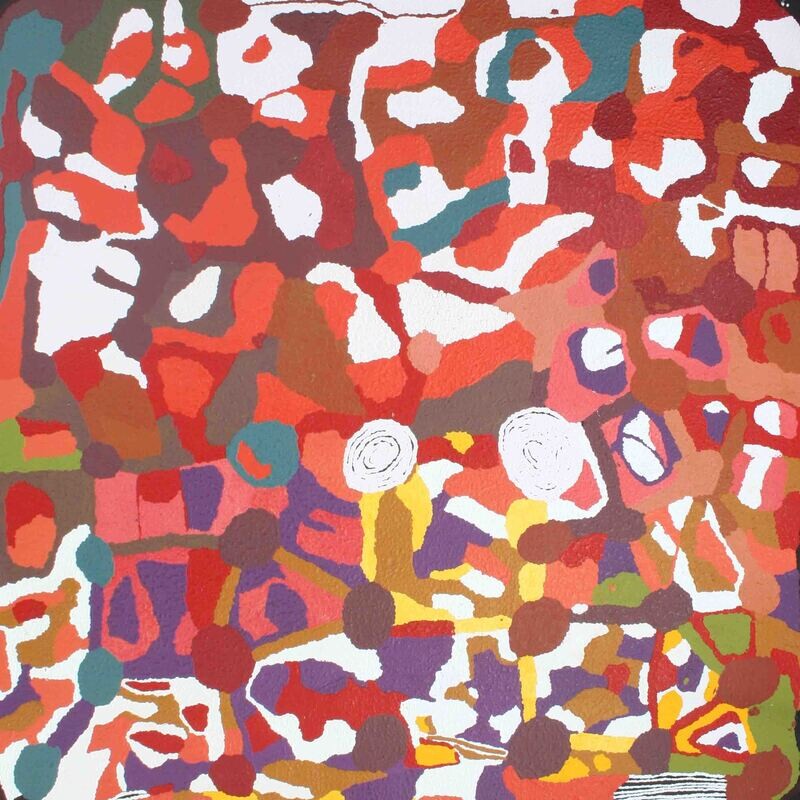Ngipi Ward
Ngipi Ward, born in 1949, in Tjirrkaupa, Patjarr, Western Australia, is a member of the Ngaantjatjarra people. She has two works displayed at the National Gallery of Victoria and the South Australian Art Gallery.
Ngipi lived in the small, remote community of Patjarr in the Gibson Desert, where she led a nomadic life of hunting and gathering with her family until well into the 1960s. One of her paintings depicts a series of water sites belonging to her husband. She would accompany him to these sites, including a significant rockhole called Katantjarra. Further along their journey, they reached Yumantjarra, which has two rockholes where rabbits could be hunted. Other sites include Warlku and Purmingka, each with two rockholes, and Mulyartjan, an area with four rockholes west of Patjarr. They traversed the country kapitu-kapitu, moving from water to water.
In the Dreaming story (tjukurrpa) that explains the creation of this country, the rockholes were created by Tjilkamarda, the echidna ancestor, who in a fit of anger caused a hailstorm. He then traveled to Kuntarantjarra and Yunpalara, a large claypan site, and later to Manmun. Another sacred songline, the Wati Kutjarra (two men) tjukurrpa, also passed through this region, continuing to Tallalla, Parrantja, and Tukarankatja rockholes, where the two men encountered and 'took' a woman on their long travels to the south.
Provenance: Kayili Artists

